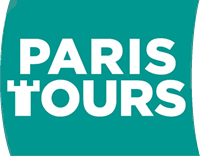Paris–Tours
 |
|
| Date | Mid-October |
|---|---|
| Region | Chevreuse to Loire, France |
| Competition | UCI Europe Tour |
| Type | One-day |
| Organiser | Amaury Sport Organisation |
| First edition | 1896 |
| Editions | 110 (as of 2016) |
| First winner |
|
| Most wins |
|
| Most recent |
|
Paris–Tours is a French one-day classic cycling race held every October from the outskirts of Paris to the cathedral city of Tours. It is a predominantly flat course through the Chevreuse and Loire valleys; the highest point is 200 m, at Le Gault-du-Perche. It is known as a "Sprinters' Classic" because it frequently ends in a bunch sprint at the finish, in Tours. For several decades the race arrived on the 2.7 km long Avenue de Grammont, one of cycling's best-known finishing straits, particularly renowned among sprinters. Since 2011 the finish was moved to a different location because a new tram line was built on the Avenue de Grammont.
Paris–Tours was first run for amateurs in 1896, making it one of the oldest cycling races in the world. It was organised by the magazine Paris-Vélo, which described that edition won by Eugène Prévost as, “A crazy, unheard of, unhoped for success”. It was five years before the race was run again and a further five years (1906) before it became an annual event for professionals, with L'Auto as organiser. L’Auto ran the Tour de France (TDF) and Paris–Tours is still run by the Tour organiser, Amaury Sport Organisation.
.
Paris–Tours has had many route changes although the distance has remained about 250 km. The start was moved out of Paris in the early days, first to Versailles, then to at Saint-Arnoult-en-Yvelines. Since 2009, the route has started in the Department of Eure-et-Loir. A loop through Chinon was added between 1919 and 1926 to make the approach to Tours hilly lanes on the south bank of the Loire and the total distance 342 km. Sprinters continued to dominate and in 1959 the organisers added three ascents of the Alouette Hill. It made little difference.
...
Wikipedia
